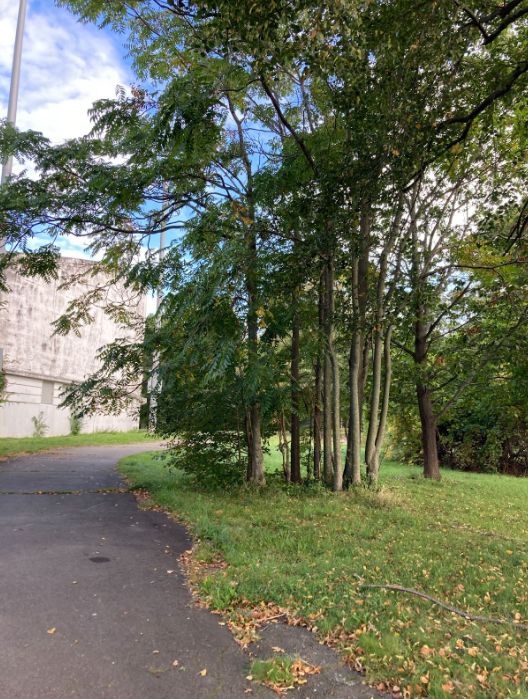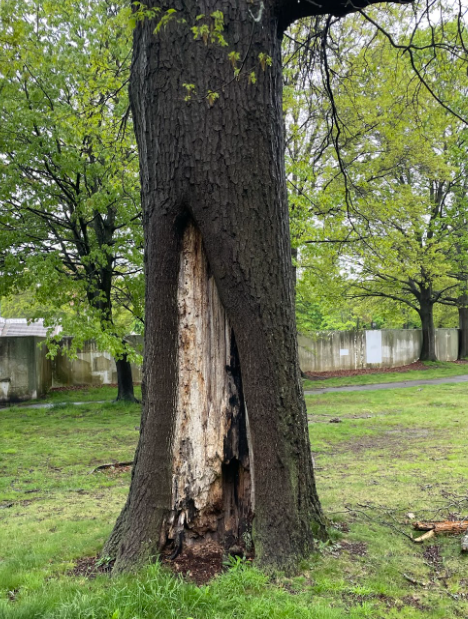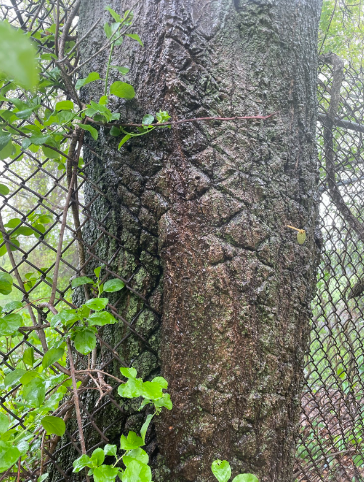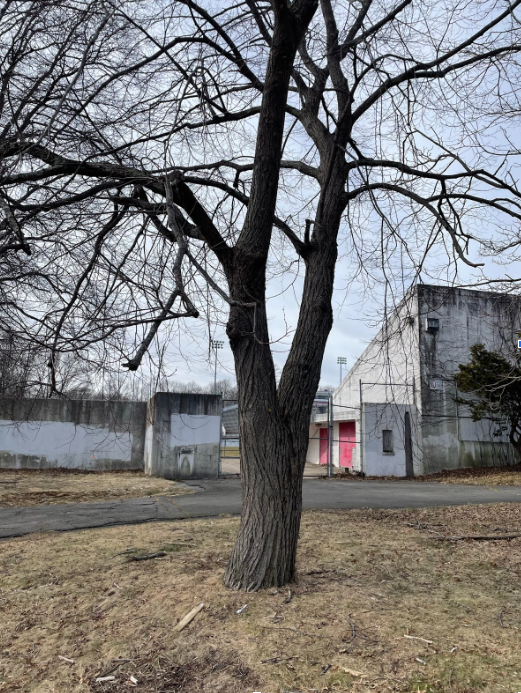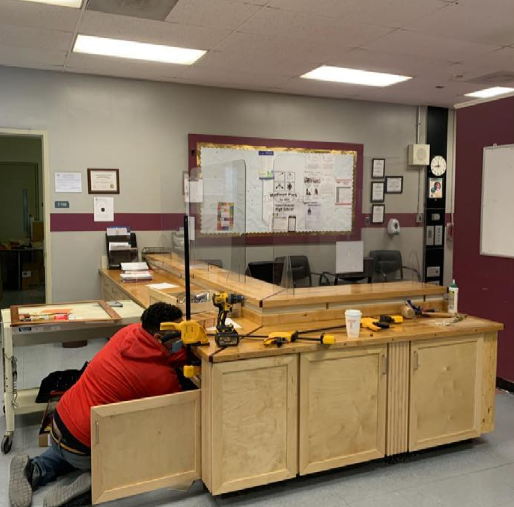Tree Canopy at White Stadium
Impacts and canopy investments.
The City of Boston is expanding public access to high-quality athletic facilities for BPS students and park visitors while also taking care of Franklin Park’s tree canopy. Over the next 10 years, we plan to plant more than 500 trees to help keep the park healthy for the future, and we want the community to be part of this effort.
Alignment with the Franklin Park Action Plan
As part of the White Stadium Rehabilitation Project, we are following recommendations of the Franklin Park Action Plan by preserving and planting new trees to support the next generation of the park's tree canopy. Using feedback from the community and working closely with Reed Hilderbrand—a top landscape architecture firm and author of the Franklin Park Action Plan— this project aims to:
- uphold Olmsted’s vision,
- support the City’s Urban Forest Plan, and
- meet the needs of Boston Public Schools and the community.
In some areas, we will need to remove a limited number of trees to deliver a project that addresses these needs. Most of the trees removed are invasive species, following the Franklin Park Action Plan’s guidance to protect the park’s key landscape features.
Key features that the Rehabilitation Project will protect or improve:
- Roxbury puddingstone outcroppings (rock formations), carefully included in the stadium’s design;
- The north-to-south axial view, keeping the clear sightline from Walnut Avenue to the large Playstead;
- Heritage and Legacy Trees around the stadium.
The project’s thoughtful design will keep the open, peaceful feel of Franklin Park and the Playstead while improving the park’s environmental health and lasting impact.
Tree Canopy Preservation and New Plantings
Our commitment to Franklin Park’s future includes both preserving its existing tree canopy and enhancing it with significant new plantings. Through careful planning, we are retaining at least 120 mature trees within the stadium impact area. Where removals are necessary, we are adhering to the requirements of Boston’s Public Tree Protection Ordinance, which includes the tagging and community presentation of removals of Public Shade Trees.
But the Rehabilitation Project will also go above and beyond the Ordinance in a novel way: for each Public Shade Tree defined by the Ordinance, we will mitigate removal based on industry best practices. About 80 new trees will be planted in the project area, and additional canopy tree plantings will occur through the creation of the “Franklin Park Tree Bank”, which will be financed jointly by Boston Unity Soccer Partners and the City of Boston. This significant new fund will allow the City to plant more than 500 new trees within Franklin Park and its environs over the next decade, expanding and improving the tree canopy.
Spacing these plantings out allows trees to mature at different rates, creating a layered canopy that grows stronger, healthier, and more resilient over time. This phased approach helps sustain the park’s ecological health, providing shade and beauty for generations to come.
WHAT’S A TREE BANK:
A tree bank is a fund dedicated to tree planting. The Franklin Park Tree Bank will be overseen by the Parks Department and limited to planting and maintaining trees in Franklin Park, allowing us to replace trees based on the caliper inches (or trunk inches) to be removed. The fund budgets costs for the new trees, their installation, and their maintenance during the critical establishment period.
BENEFITS OF THIS TREE BANK PLANTINGS:
- Enhanced Biodiversity: The Parks Department, using the Franklin Park Tree Bank, will choose a variety of tree species, including ones that adapt to climate change, making Franklin Park’s ecosystem healthier and more resilient.
- Environmental Stability: Planting new trees over time will create a strong, lasting canopy and enhance the park’s natural beauty.
- Improved Air Quality and Noise Reduction: As these trees grow, they will improve air quality and reduce noise, making the park a quieter, cleaner place.
- More Shade and Visitor Comfort: The growing canopy will provide more shade, creating a cooler and more comfortable park for everyone.
Tree Impacts
WHICH TREES WILL BE AFFECTED?
To support the goals of the Franklin Park Action Plan, we are carefully evaluating potential tree removals for health, species, and structural impact. Tree removals will fall under the following categories:
Invasive Species:
These trees, identified in the Action Plan, need to be removed to help restore the park’s ecosystem. Invasive trees take important resources like water and nutrients away from native plants, grow rapidly, and block sunlight, which prevents native plants from thriving. Some invasive species also release chemicals that can harm native plants.
Dead, Dying, or Diseased Trees
Removing trees that pose safety risks helps keep the park safe for visitors and speeds up the growth of a healthier tree canopy. Dead, dying, or diseased trees often show signs of decay, like damaged trunks, fungus, rot, or pests such as longhorn beetles and emerald ash borers. These pests can weaken trees, making them more likely to fall, and can spread to other healthy trees, causing more harm. Removing these trees lets more sunlight and nutrients reach young, healthy trees, helping the park’s canopy grow stronger and healthier.
Structural Conflicts
Due to a lack of tree maintenance at White Stadium over the past half-century, dozens of trees on site today are growing into and against walls, fences, and other structures. This condition compromises the long-term survival of the trees as they grow, and removal is the only viable option.
Some trees have grown into walls, fences, or other structures at White Stadium, making their long-term survival unlikely. Removing them will prevent damage and allow for healthier growth.
Select Healthy Trees
The smallest number of trees to be removed falls into this category. In a few cases, some healthy trees will need to be removed to make space for the White Stadium Rehabilitation Project, including upgrades to the stadium’s design, utilities, and accessible pathways. While removing healthy trees is rare, these improvements will benefit the park overall. The Franklin Park Tree Bank will help replace these trees by adding over 500 new plantings, strengthening and expanding the park’s tree canopy for the future.
A New Life for Park Trees
RECYCLING WOOD FOR COMMUNITY USES
Some of the trees removed for the White Stadium Rehabilitation will be repurposed to benefit the stadium and community in lasting ways. To promote sustainability, the City is exploring how the wood can be milled into lumber for use in the new stadium construction. Other wood will be reused for community projects. For example, Madison Park Technical Vocational High School’s Carpentry Program will use some of the wood for hands-on classes, giving students valuable experience and resources. We’re also open to other community ideas for repurposing the wood, such as building playground equipment or adding features to the park. Please share your thoughts on this or other topics at whitestadium@boston.gov.



